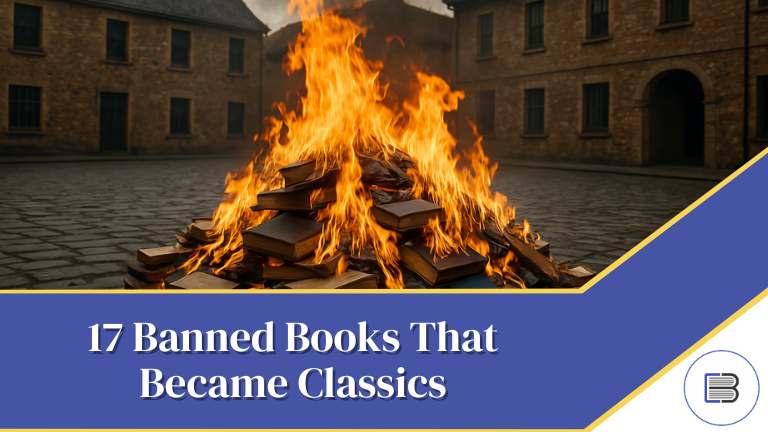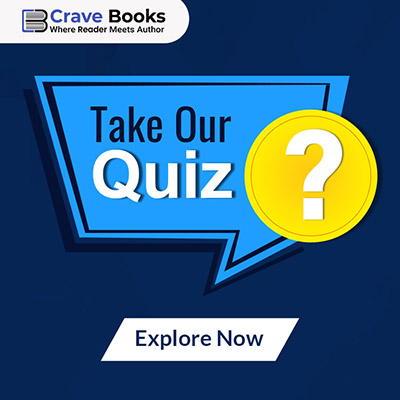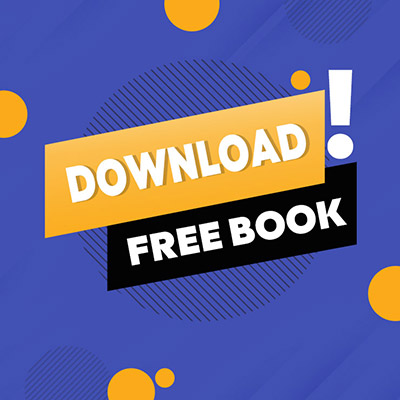Books have a way of shaking things up — especially the ones that get banned before becoming beloved classics.
From political revolutions and religious outrage to steamy scenes and “offensive” language, these controversial books sparked enough backlash to land on banned lists around the world.
But here’s the twist: many of these once-censored titles are now must-reads in schools, studied in college lit classes, and cherished by generations of readers.
Whether it was 1984’s Big Brother, The Catcher in the Rye’s rebellious angst, or Lolita’s taboo themes, these books prove that powerful storytelling can survive censorship — and come out stronger.
17. Candide (1759) – Voltaire
Where & Why Banned: This sharp French satire was denounced across Europe upon publication. It was immediately banned in Catholic Paris and Calvinist Geneva for its blasphemous parody of religion and scathing critique of authority. Even decades later, U.S. customs seized copies as “obscene”. Candide’s irreverent humor, sexual innuendo, and philosophical skepticism toward the idea that “this is the best of all possible worlds” outraged censors.
Legacy: Despite the early bans, Candide became a bestseller and an enduring classic of French literature. Voltaire’s witty attack on complacent optimism is now celebrated as a cornerstone of Enlightenment literature, illustrating the power of satire to challenge dogma and champion freedom of thought.
16. Uncle Tom’s Cabin (1852) – Harriet Beecher Stowe
Where & Why Banned: Stowe’s antislavery novel was banned across much of the American South soon after its release. Slaveholding states saw its anti-slavery sentiment and vivid depictions of cruelty as incendiary propaganda. Indeed, it’s considered the first widely banned book in U.S. history. The Confederate States prohibited it for “holding pro-abolitionist views and arousing debates on slavery,” which threatened the pro-slavery status quo. (Notably, Czarist Russia also banned it for promoting ideas of universal equality.)
Legacy: Uncle Tom’s Cabin became an international sensation and is often credited with galvanizing anti-slavery forces before the Civil War. Abraham Lincoln (perhaps apocryphally) called Stowe “the little lady who made this big war.” Today the novel is recognized as a catalyst for social change and an early classic of protest literature, valued for its historical impact despite modern debates about its racial characterizations.
15. Madame Bovary (1857) – Gustave Flaubert
Where & Why Banned: Flaubert’s realistic tale of a provincial doctor’s wife who engages in adultery scandalized Second-Empire France. Upon its serialization, French authorities prosecuted Flaubert for “outrage to public morality” due to the novel’s frank depictions of adultery and female sexuality. The novel was banned in 1857 for “overt sexuality,” and Flaubert endured a public trial in Paris to defend his work. Censors were particularly alarmed that Emma Bovary’s lust and affairs were portrayed without clear condemnation – a woman breaking social and marital norms was simply too shocking.
Legacy: Flaubert was acquitted, and Madame Bovary soon became a bestseller. The publicity of the trial only heightened interest. Now regarded as a masterpiece of literary realism, the novel broke new ground in its unflinching portrayal of a woman’s inner desires and disappointments. Emma Bovary’s story is taught worldwide as a cautionary tale of romanticism – and as an example of art triumphing over censorship.
14. Adventures of Huckleberry Finn (1884) – Mark Twain
Where & Why Banned: Twain’s iconic American novel has been controversial since the day it hit shelves. In 1885, it was condemned as “trash” by the Concord, MA public library and banned for its rough vernacular speech. Over the following decades, the book faced persistent challenges for both its coarse language and racial slurs, notably its frequent use of the n-word. Early critics felt the frontier dialect and Huck’s irreverence would corrupt young readers, and by the 20th century debate focused on accusations of racism – despite the book’s anti-racist intent – due to the portrayal of Jim and the prejudices of the time.
Legacy: Huckleberry Finn is now lauded as “one of the greatest American novels of all time”. Twain’s tale of a boy and a runaway slave on the Mississippi is celebrated for its pioneering use of colloquial language and its bold challenge to slavery and hypocrisy. The novel remains on school reading lists (and on ALA’s most-challenged lists) as an essential, if sometimes uncomfortable, examination of American race relations and the journey to moral independence.
13. Ulysses (1922) – James Joyce
Where & Why Banned: Joyce’s modernist epic – with its stream-of-consciousness prose and frank sexual passages – ignited one of the 20th century’s first major obscenity battles. In 1921, a U.S. court declared a serialized excerpt obscene (thanks to a scene involving masturbation), and U.S. obscenity laws effectively banned Ulysses for over a decade. Copies were seized and burned by customs; it was illegal to import the book into the U.S. and Britain. Censors objected to the novel’s sexual frankness, bodily functions, and four-letter words – under the prevailing Comstock Act, it was labeled lewd and lascivious.
Legacy: In 1933 a landmark U.S. court decision (United States v. One Book Called Ulysses)finally ruled the book was literature, not pornography, ending the ban. Today Ulysses is hailed as a masterpiece of modernist literature – renowned for its inventive stream-of-consciousness style and depth. Once smuggled under the table, it now tops “Greatest Novel” lists worldwide, studied for its groundbreaking narrative technique. The successful defense of Ulysses was a watershed for literary free expression.
12. Lady Chatterley’s Lover (1928) – D. H. Lawrence
Where & Why Banned: Lawrence’s novel about an upper-class woman’s affair with a gamekeeper was privately printed in 1928, but its unexpurgated text was long deemed unpublishable in the English-speaking world. Both the U.S. and U.K. banned the book for decades for its then-astonishingly explicit sexual content – including frank descriptions of intercourse and use of then-taboo four-letter words. The U.S. Post Office seized copies as obscene, and Britain’s censors also forbade it. The ban came to a head in Britain in 1960, when Penguin Books risked publishing the full text, leading to a famous obscenity trial. Prosecutors infamously asked if it was a book one would wish one’s wife or servants to read.
Legacy: Penguin’s acquittal in the 1960 U.K. trial marked a victory for literary freedom. Lady Chatterley’s Lover, finally available to the public, became a bestseller and a symbol of the new sexual openness of the 1960s. What was once shockingly obscene is now regarded as a classic erotic novel and a milestone in the fight against censorship. Its publication marked the end of an era: the trial’s outcome “remains a symbol for freedom of expression” in literature.
11. All Quiet on the Western Front (1929) – Erich Maria Remarque
Where & Why Banned: This searing anti-war novel, told from a German soldier’s perspective in World War I, was an instant international bestseller – and almost immediately reviled by rising fascists in Germany. The Nazis attacked it as “betraying the soldier’s honor” and **banned and burned copies in 1933. Adolf Hitler and Joseph Goebbels feared its grim, pacifist portrayal of trench warfare would sap the glorification of war that their regime relied on. Goebbels orchestrated disruption of the film adaptation, sending Nazi youths to release rats in cinemas. Ultimately, owning All Quiet became a crime in Nazi Germany.
Legacy: Far from fading away, Remarque’s novel is now considered one of the greatest war novels ever written. Its unflinching depiction of the physical and psychological trauma of combat has influenced generations’ understanding of World War I. All Quiet on the Western Front earned Remarque international accolades (and even a 1931 Nobel Peace Prize nomination) and continues to be read worldwide as a poignant plea against the glorification of war.
10. Brave New World (1932) – Aldous Huxley
Where & Why Banned: Huxley’s dystopian vision of a hedonistic future World State raised eyebrows from day one. Ireland banned Brave New World in 1932 for its profanity and anti-family, anti-religious themes (the novel portrays a society of promiscuity, drug use, and the abolition of family). It was later banned in India in 1967 for being pornographic. In the United States the book has been frequently challenged in schools – critics object to its depictions of casual sex, recreational drug use (“soma”), and the subversion of religion and motherhood. As recently as the 1980s, it was removed from classrooms in Missouri for these reasons.
Legacy: Brave New World weathered the criticism to become a canonical dystopian classic, often paired with Orwell’s 1984 as a prescient warning about the loss of freedom. Huxley’s phrase “brave new world” has entered the lexicon as shorthand for dehumanizing technological progress. The novel’s once-shocking elements – test-tube babies, feel-good drugs, state-sponsored promiscuity – spur important discussions about individuality, happiness, and social control. The book remains one of the 20th century’s most acclaimed novels, valued for its still-relevant cautionary insight.
9. The Grapes of Wrath (1939) – John Steinbeck
Where & Why Banned: Steinbeck’s Depression-era epic about Dust Bowl migrants was lauded by many but reviled by the authorities in California’s agricultural regions. Only months after publication, the county board in Kern County, CA (the Joad family’s destination in the novel) banned the book from libraries and schools. Local power-brokers – big landowners and farm bureaus – were enraged by the novel’s portrayal of their mistreatment of migrant workers, calling it “a libel and a lie”. The Associated Farmers organization even held public book burnings in 1939. Ostensibly banned for “obscenity,” the book was, in truth, censored for political reasons – it was too sympathetic to the poor and too critical of capitalist growers.
Legacy: The Grapes of Wrath won the Pulitzer Prize and today stands as a pillar of American literature. The Kern County ban was lifted by 1941 amid public outcry, and Steinbeck’s novel went on to be read by millions worldwide. Its reputation as a social protest classic has only grown; the Joads’ plight humanized the Great Depression and influenced America’s conscience. Ironically, the attempts to suppress the book only underscored the importance of its message about dignity and injustice.
8. Animal Farm (1945) – George Orwell
Where & Why Banned: Orwell’s allegorical novella – a barnyard fable satirizing the rise of Soviet communism – was immediately banned in the USSR upon publication. Stalin’s regime understood all too well that the pig dictator “Napoleon” represented Stalin. The book was likewise suppressed in other communist countries (Cuba, North Korea, etc.) and even some capitalist states uneasy about its message. In the 1990s, Kenya’s President Moi banned an Animal Farm play for its subversive potential. And in 2002, the United Arab Emirates banned the novel in schools on religious grounds (talking pigs violated Islamic sensibilities). Over the decades, this seemingly simple tale has been attacked for political allegory, “dangerous” ideas about equality, and even its use of anthropomorphic pigs.
Legacy: Animal Farm has transcended its Soviet context to become a universal satire on the corrupting nature of power. Far from being silenced, it’s taught worldwide as a primer on how revolutions can go wrong. During the Cold War the CIA actively distributed the book (and an animated film) to spread its anti-totalitarian message. Today, quotes like “All animals are equal, but some animals are more equal than others” are part of the cultural vocabulary. Orwell’s little farm fable, once forbidden behind the Iron Curtain, now stands as a classic defense of free expression.
7. Nineteen Eighty-Four (1949) – George Orwell
Where & Why Banned: Orwell’s dystopian masterpiece about a totalitarian future state was censored on both sides of the Iron Curtain. The novel was banned in the Soviet Union shortly after being translated, thanks to its obvious rebuke of Stalinism and total surveillance. Ironically, in 1981 it was challenged in a Florida school district for being “pro-communist” – some parents misread it as sympathetic to socialism, and objected to its dark themes and sexual content. Indeed, the book has been challenged in American schools for “immoral” content and explicit sexual matter (Winston and Julia’s affair). At various times, critics have bristled at its bleak, politically charged content.
Legacy: 1984 is now virtually synonymous with warnings about government oppression. Far from being suppressed, it’s one of the most influential novels of the 20th century – introducing terms like “Big Brother,” “Orwellian,” “thoughtcrime,” and “Newspeak” into our language. The novel’s grim vision of a world devoid of truth or privacy remains chillingly relevant. Despite past challenges, 1984 is a staple of school curricula in many countries (and notably not banned in modern-day Russia or China), proving how a once-controversial book can become required reading on the value of freedom.
6. The Catcher in the Rye (1951) – J. D. Salinger
Where & Why Banned: Salinger’s coming-of-age novel, with its candid teenage narrator, has long been a lightning rod for censorship in U.S. schools. In 1960, an Oklahoma teacher was fired for assigning the book, and by the 1970s and ’80s Catcher topped the list of most frequently banned books in America. The complaints were consistent: Holden Caulfield’s narration is laced with profanity, including words like “goddam” (perceived as blasphemous) and sexual references to prostitutes and adolescent lust. School boards cited the novel’s “vulgar” language, talk of sex, and anti-authority attitude as grounds for removal. At times it was even accused of being “immoral” or encouraging rebellion and drinking.
Legacy: Despite these challenges, generations of young readers have found The Catcher in the Rye immensely relatable, and it remains firmly entrenched as an American classic. Salinger’s novel is credited with revolutionizing young adult literature, and its slangy, intimate style set the template for countless coming-of-age stories. The novel that some communities tried to shield teens from is now often taught to teens for its insights into adolescent alienation. Holden’s cry against “phoniness” continues to resonate – ironically validating the very freedom of self-expression that censorship sought to curb.
5. Lolita (1955) – Vladimir Nabokov
Where & Why Banned: Nabokov’s Lolita, which dares to narrate a middle-aged man’s sexual obsession with a 12-year-old girl, was destined to scandalize. Originally published in Paris, the novel was banned in Britain and France soon after. In late 1955, Britain’s Home Office ordered customs to seize all copies entering the UK, branding it pornography. France’s Ministry of the Interior followed suit in 1956, banning Lolita for two years on obscenity grounds. Countries from Argentina to New Zealand similarly restricted it. The combination of erotic content, taboo subject matter (pedophilia and incestuous desire), and Nabokov’s provocative lack of moral judgment in the narrative voice made Lolita a prime target for censors in the 1950s.
Legacy: Over time, the shock turned into awe at Nabokov’s artistry. By 1958 Lolita found a U.S. publisher and soon became a runaway bestseller. Today it is widely regarded as one of the greatest novels of the 20th century, acclaimed for its lyrical prose and complex psychological portraiture. Readers and critics have unpacked its layers of unreliable narration and moral ambiguity in countless essays. Far from being remembered as “dirty,” Lolita is studied as a literary tour de force – albeit one that still sparks ethical debates. Its journey from banned book to classic underscores changing attitudes toward what literature can address.
4. Doctor Zhivago (1957) – Boris Pasternak
Where & Why Banned: Pasternak’s sweeping novel of the Russian Revolution and its aftermath fell afoul of Soviet authorities for ideological reasons. Soviet censors refused to publish Doctor Zhivago in 1956, deeming it anti-Soviet because it showed the Revolution’s impact on individual lives without party propaganda. Pasternak’s nuanced treatment of history, his “less-than-worshipful” attitude toward the Bolshevik Revolution and inclusion of religious themes, were “unacceptable to the Soviet publishing world”. The manuscript had to be smuggled to Italy, where it was first published. The USSR’s ban was so strict that when Pasternak won the 1958 Nobel Prize in Literature for Zhivago, the Kremlin forced him to decline it.
Legacy: Though suppressed at home, Doctor Zhivago became an international cause célèbre. Smuggled copies (aided by the CIA as a Cold War cultural weapon) circulated among Soviet readers hungry for truth. After decades underground, the novel was finally published in Russia in 1988. Today it’s celebrated worldwide as a classic of Russian literature, famous for its epic romance between Yuri Zhivago and Lara against the backdrop of revolution. Pasternak’s lyrical exploration of art, love, and individuality under totalitarianism ensured that Doctor Zhivago survived its censors – and ultimately triumphed as a testament to the human spirit in tumultuous times.
3. To Kill a Mockingbird (1960) – Harper Lee
Where & Why Banned: Lee’s Pulitzer Prize–winning novel about racial injustice in the Deep South has been a frequent target of bans, despite (or because of) its moral themes. In 1966, a school board in Virginia removed the book from schools, calling it “immoral” and objecting to its frank discussion of rape. Over the years, challenges have cited the novel’s strong language (racial slurs), the topic of sexual assault, and the upsetting nature of its racial themes. In some cases the complaint is that the book’s use of the n-word (in portraying 1930s Alabama) is itself racist or makes students uncomfortable. More recently, some districts have briefly suspended the book from curricula on the grounds that it “makes people uncomfortable” – precisely due to its honest confrontation of racism.
Legacy: To Kill a Mockingbird remains one of the most widely read novels in American schools and is beloved for its poignant narrative through young Scout’s eyes. The very elements that have been challenged – its unflinching look at racial prejudice and moral integrity – are why the book is so valued. Atticus Finch’s defense of an innocent Black man and his lessons of empathy (“walk in someone else’s shoes”) have influenced generations. Far from being consigned to the banned list, Lee’s novel is enshrined as a 20th-century classic that continues to spur crucial conversations about conscience and social justice.
2. The Master and Margarita (1967) – Mikhail Bulgakov
Where & Why Banned: Though written in the 1930s Soviet Union, Bulgakov’s subversive satirical novel could not see the light of day until long after his death. Its fantastical story – in which the Devil visits atheist Moscow – was an obvious critique of Soviet repression and hypocrisy. Under Stalin, the manuscript had to be hidden; official Soviet censors only allowed a heavily cut version to be serialized in 1966–67, with about 12% of the text removed. Themes of religious imagination, satire of bureaucrats, and the idea of artistic freedom personified by the character “Master” were all too dangerous. For years, The Master and Margarita effectively existed as a banned underground classic (samizdat) – passed secretly hand to hand in its uncensored form.
Legacy: When finally published in full (first in Paris in 1967, then in Russia in 1973), Master and Margarita astonished the world. It is now acclaimed as one of the best novels of the 20th century and perhaps the greatest Soviet satire. Bulgakov’s innovative blend of magical realism, political satire, and philosophical depth has influenced countless writers and artists (from Mick Jagger to graphic novelists). Readers revel in its bold defense of art and imagination in the face of tyranny – the very qualities that once led Soviet censors to suppress it. Today the novel stands as a triumphant example of a suppressed work that gained even greater power through legend and belated freedom.
1. The Satanic Verses (1988) – Salman Rushdie
Where & Why Banned: Perhaps no book on this list sparked as much global furor as Rushdie’s The Satanic Verses. Within months of publication, India became the first country to ban the novel (1988), fearing it would offend Muslim citizens and spark unrest. Indeed, many in the Islamic world viewed the book’s magical-realist depiction of a prophet-like character as blasphemy against Prophet Muhammad. Pakistan, Bangladesh, Egypt, South Africa, and others quickly followed with bans. By early 1989, the novel was banned in at least a dozen countries across Asia, Africa, and Latin America. Most notoriously, Iran’s Ayatollah Khomeini issued a fatwa in 1989 calling for Rushdie’s assassination – an unprecedented move that led to violence around the world. The reasons were squarely religious: “blasphemous” content deemed offensive to Islam, which in turn ignited a broader debate on free speech versus religious respect.
Legacy: The Satanic Verses controversy marked a turning point in the discussion of artistic freedom. The novel itself, while acclaimed by many critics, became secondary to the issue of the author’s right to publish it without fearing for his life. Rushdie spent years in hiding, but the uproar also rallied support for free expression. Decades later, The Satanic Verses is studied as a significant work of postcolonial literature and magical realism, exploring migration and identity. More importantly, it’s remembered as a flashpoint for intellectual freedom – a modern classic that tested the limits of censorship in an interconnected world, and proved that the written word can still profoundly shake the world’s conscience.
Have you checked out any of our Free Reads? Download these books instantly.



